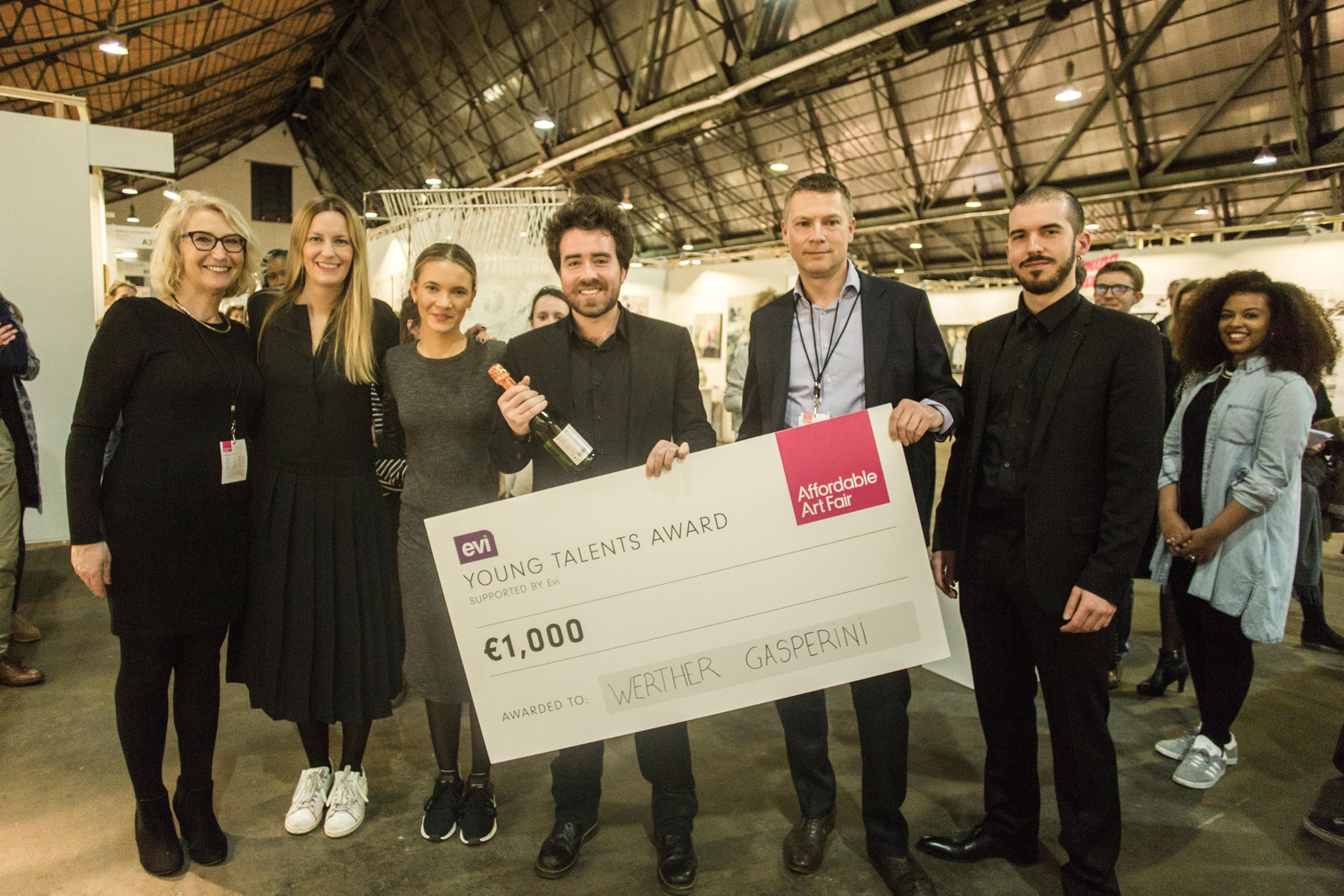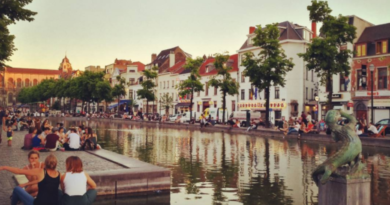Affordable Art Fair in Brussels 2017: the winner
Take Art Home is the slogan of this four-day (16-20 Feb, 2017) art fair at Tour and Taxis in Brussels which has reached its 9th edition.
Gathering from the crowd visiting, inspecting, analyzing, commenting and buying the success of the initiative seems assured. People leaving with parcels (small or huge, needing four or more hands to be taken to the car) seemed satisfied of their choice that would decorate a few hours later the walls of their houses.
The prices were “affordable” especially for some of the smaller items. Many of the artists were present, explaining their ideas and answering questions from the public. There were young school-leaver artists who presented the freshness of their ideas and inspiration, many from different countries in Europe but a few also from Asia. Japan and South Korea had brought to the Affordable Art Fair the best of some of their young artists, showing the most traditional or the most innovative techniques, delicate colours or unusual structures, metal sculptures or paintings on very fine rice paper produced by some of the artists themselves. The work of art starts with the material used to create it, as if it too was part of the process. So sculpted bricks are made of powdered bricks reconstructed in the way the artist decides, paper mobiles with fluttering butterflies are born from the paper created by the artist himself.
The 2017 edition of the Affordable Art Fair has doubled the number of galleries exposing their works with artists from several countries in Europe and in the world to a total number of 96, that is 39 more than in previous years. Almost one hundred galleries with 15 from Asia (Seoul and Tokyo in particular).
Among the visitors one could easily distinguish the collectors, who would know exactly where to go and who to see, from the newcomers, attraced by the idea of investing in a work they particularly like at a price they can afford. The young artists seemed to be more than pleased to answer the questions from the public and explain the reasons for certain choices, some combinations of colours and the techniques they used.
Gathering from the number of people flocking to the exhibition area on a sunny Saturday afternoon, it looks as if last year’s number of visitors, 18.000, will be certainly overtaken this year.
The welcome is given to the visitor by the impressive installation of the French artist and architect Emmanuelle Moureaux with her exhibition of “100 colours” that immediately put you in the right cheerful mood. Colours become something concrete, as if you could touch and feel them not only with your eyes but with all your being. The colourful welcome arrives after passing, at the exterior of the building, through the “barricades” by the Italian artist Paolo Ciribelli, geometrical shapes that aim at “training “ the eye of the visitor to different spaces before meeting the explosion of colours waiting in the entrance hall.
Other young people inside had exhibited their work to be submitted to the exam of the jury. The six finalists, between 25 and 32, had their ‘masterpieces’ in the bar area where people had gathered to wait for the final decision of the jury.
Evi Young Belgian Talent 2017
And the winner has been declared Werther Gasperini, 30, with a message of social and human awareness. A red carpet on which lies a shape of a human being that could be a man or woman, face down in a praying mode, all wrapped in golden paper and shrouded by a golden cape covering the whole body. One could only distinguish its head and arms round it, the body slightly curved over the knees, a feeling of complete exhaustion or desperation. The shape could be dead or alive, it is not clear, but it certainly is a powerful reminder of the condition of many human beings washed ashore from the horrors of wars and migrations. The golden shroud is too evocative of the cape that migrants rescued from the sinking ships in the Mediterranean Sea are given by rescuers to try to keep warm after spending too long in freezing waters. A gesture reminding the discovery of the shapes of the victims of the erupting Vesuvius at Pompei who where found centuries later in the gesture of trying to breathe the last gasps of air while ashes were falling covering them for good.
More than the work of art in itself it is the message the artists tries to convey that has convinced the jury to give him the prize: a message that invites to reflect on the horrors of history, on the human suffering and an invitation (the golden cape?) to a new form of sharing, to a new feeling of solidarity and awareness even if the pain emanating from the reclining shape seems too big to be consoled.




